Mindfulness: Does it fit my school culture?
)
Countless research articles often mention mindfulness and its connection to brain neuroplasticity: the ability for neurons or brain cells to rewire their connections allowing new skills to be developed. Mindful breathing helps our nervous system to ‘calm down’ and physically helps our blood vessels to widen, allowing more oxygen to improve the functionality of the prefrontal cortex. The prefrontal cortex is the front part of our brain that performs higher level functions such as thinking, analysing, and making decisions.
In the past five years, The American School of Bangkok Green Valley has experienced positive correlation between practicing mindfulness and the following outcomes:
- Countless championships in golf and basketball tournaments locally and internationally
- Steady increase of MAP scores for all grade levels
- Steady increase in the number of AP test takers and AP test scores
- Steady increase in enrolment even during COVID-19
- 160% increase in scholarship funding offered by universities and colleges to our graduates from 2018-2021
- Average 15% of teacher turnover per year even during COVID-19
My journey of implementing mindfulness in school started in 2012. At the time, I was very fortunate to have Dr. Larry Ward and Peggy Rowe Ward EdD as my mentors who helped me initiate our mindfulness training for our stakeholders which consisted of parents, students, teachers, administrators, and support staff. They offer valuable mindfulness training courses through their educational non-profit organization: www.thelotusinstitute.org.
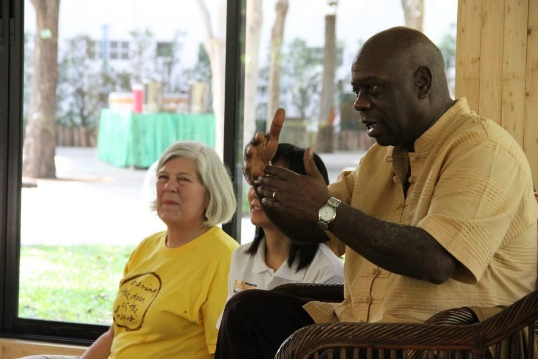
Our wonderful Mindfulness Instructors, Larry and Peggy, who have been all over the world teaching mindfulness and meditation also train our teachers on site.
How we implement mindfulness

Students of all ages enjoy colouring mandalas for relaxation and creativity.
Below is a preview of how mindfulness teachings gradually turn into life skills. In our school, mindfulness is an act of self-care, a way to increase mental, emotional, and physical well-being. Focus, concentration, and empathy are key skills that practitioners can gain and develop at the basic level. Once they are engaged in a consistent practice, learners will be able to acquire new skills and apply them in their studies, hobbies, and personal development. The courses and exercises below are taught by Dr. Larry Ward, Peggy Rowe Ward EdD, me and a team of mindfulness specialists at our school. Teachers who are passionate about mindfulness voluntarily practice through our in-house training and outside professional development. After several years of training and demonstrating their mastery, a selected few were invited to be our mindful specialists.
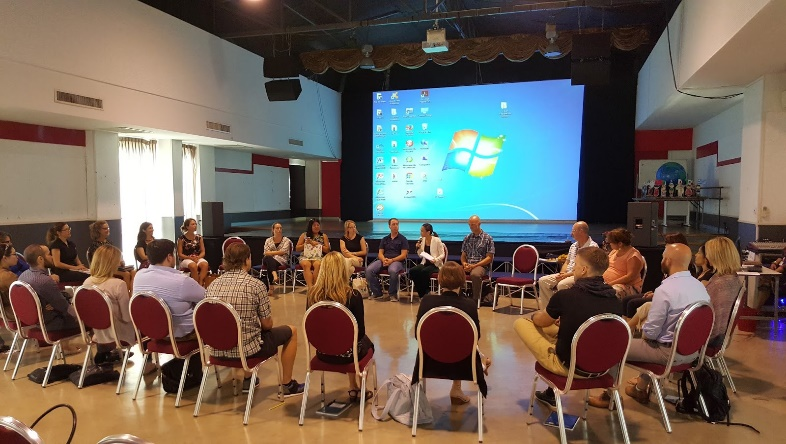
Training teachers for mindfulness in education
|
YEAR |
TOPIC/ACTIVITY |
AUDIENCE |
|---|---|---|
|
2012 |
Introduction to Mindfulness |
Administrators, Teachers, Students, Parents, and Support Staff |
|
2013-present |
Mindful Breathing Mindful Listening Mindful Eating Total Relaxation Visualization Mindful Movement |
ALL Stakeholders |
|
2014-present |
Annual overnight mindfulness retreat |
Teachers and Support Staff |
|
2016-present |
Humor and Inspiration for Young Minds Kindness Curriculum |
Elementary Students |
|
2016-present |
Balancing Transition Brain Neuroplasticity |
Middle School Students |
|
2016-present |
Effective Study Skills Brain Neuroplasticity |
High School Students |
|
2016-present |
Becoming Effective Student Role Models Mindfulness and Emotional Intelligence Brain Neuroplasticity What is Trauma? |
Teachers |
|
2016-present |
Mindfulness and Successful Parenting |
Parents |
|
2016-present |
Mindfulness for Sports / Training for Competitive Minds |
School athletes and coaches |
|
2016-present |
Transition Management Team Collaboration and Running Effective Meetings Building a Culture of Respect |
Leadership Team |
During the first five years, we explained about the benefits of mindfulness through neuroscientific research. There were some stakeholders who were sceptical about the mindfulness approach, with some individuals believing that mindfulness has more religious (rather than scientific) affiliations. As school leaders, we must remember to remain non-judgmental and continue the positive reinforcement. In time, the positive effect of mindfulness practice allayed doubts and criticisms and invited new stakeholders who were ready to roll with the school’s vision.
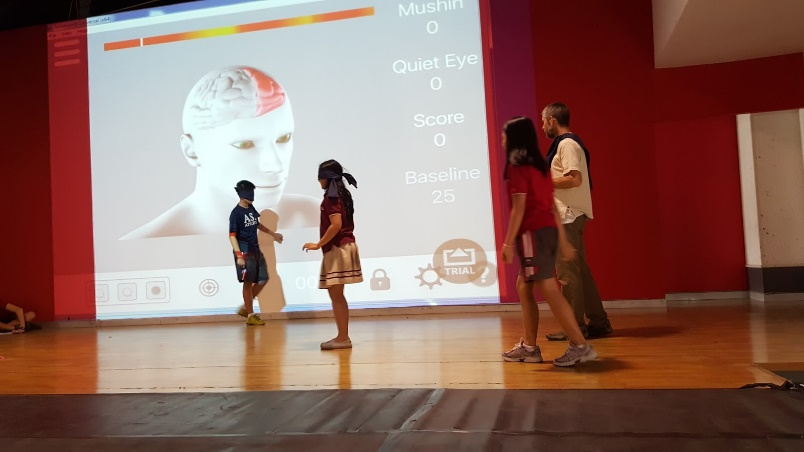
Students used a headband to measure their brain wave activities. Red lines showed that they were thinking, whereas shades of yellow green indicated that they were more relaxed and concentrated.
Gradually, all stakeholders understand and practice all the basic skills:
- Mindful breathing: practitioners sitting in an upright position and paying attention to their breath for five minutes.

- Total relaxation: practitioners lie down flat on their backs and regulate the physical sensation through a body scan technique.
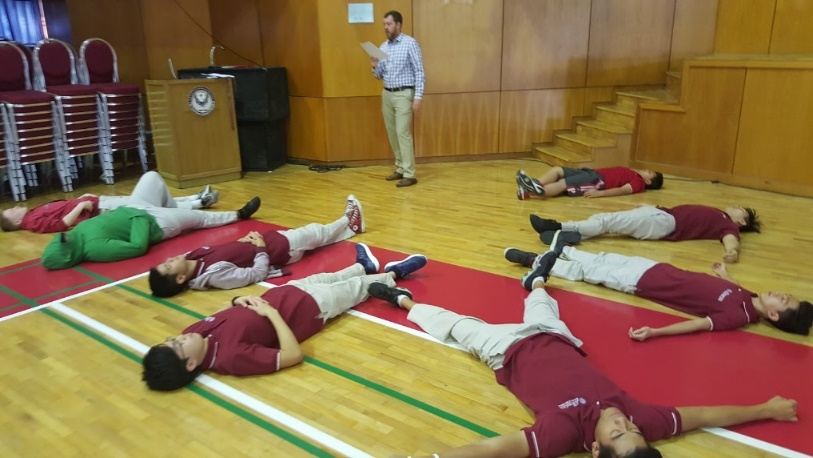
- Mindful eating: practitioners take the time to see, smell, and taste food which allows their bodies to take in the right portion.
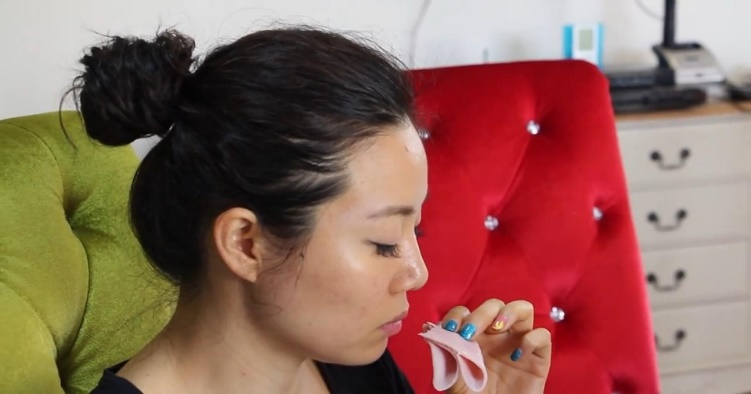
- Mindful listening: practitioners listen with deep attention by understanding what people say and do not say.
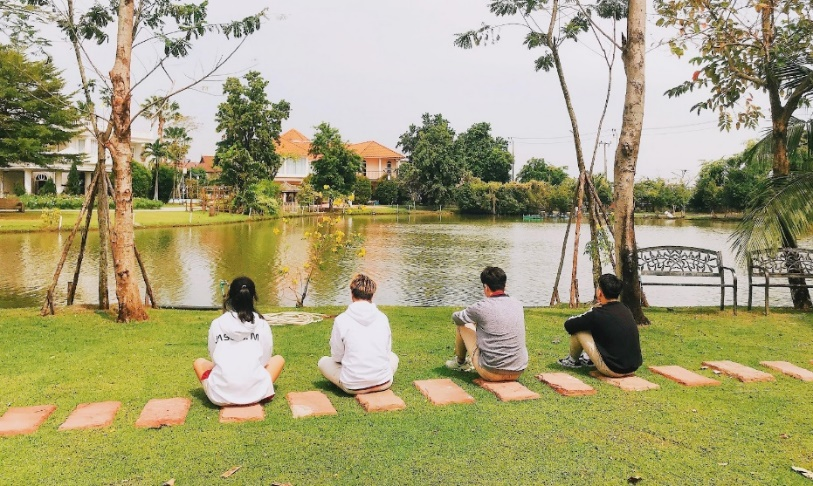
- Visualization: practitioners take their minds visually into a safe space where they can recall good memories, compassion, and self-love.
- Mindful movement: practitioners pay special attention to body movement and synchronize it with their breath.

The basic benefits that students and teachers gain at the foundational levels are the skills to relax their minds and sharpen their focus. When their minds are still, they are free from negativity. The stillness then brings moments of peace which may transform into self-love. Once we are happy with who we are, we are able to extend that unconditional love and non-judgmental attitude towards others. That often results in treating others with empathy and compassion.
Early years and elementary students generally enjoy mindfulness activities. We taught mindfulness to young children in various creative ways. Mandalas colouring, juggling, listening to music, and dragon breathing are just a few examples of how we can make mindfulness practice fun and engaging.
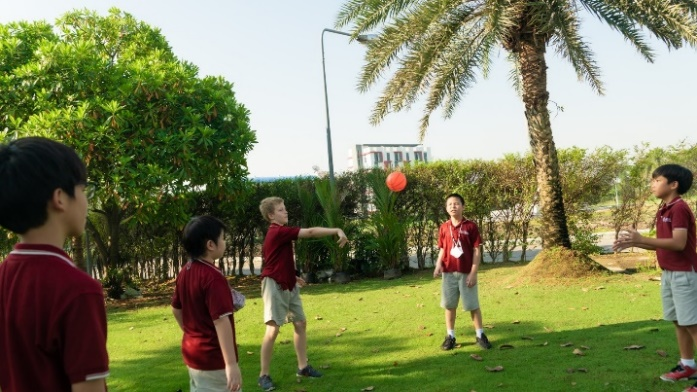
Mindful games in the garden
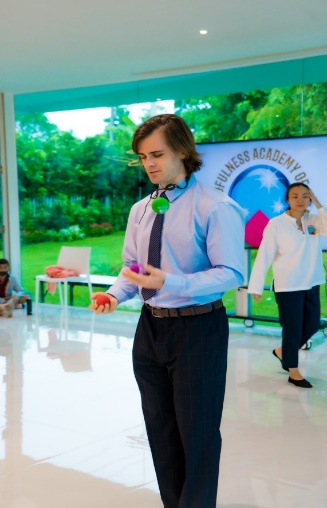
Juggling for elementary children
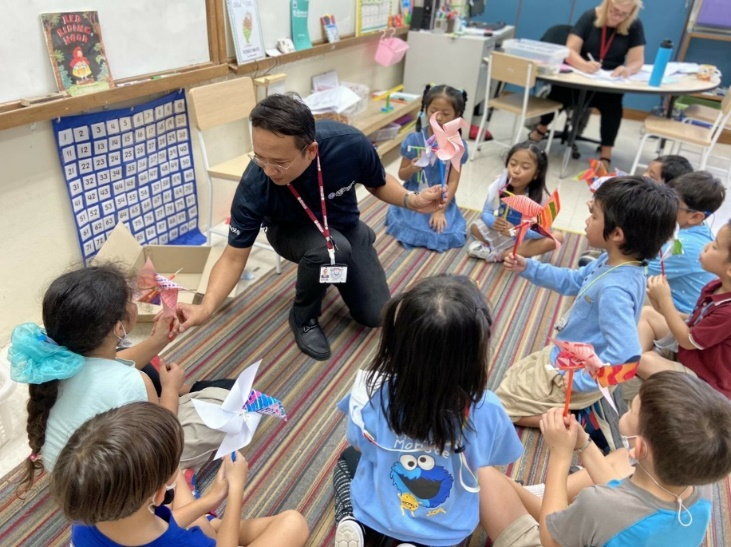
Pinwheel breathing for younger students
Middle and high school students participate in mindfulness surveys and tell us which techniques work for them. The following data shows that 231 students participated in our mindfulness assessment survey in February 2021. Total relaxation, breathing exercises, and mindful colouring are their top three favourite activities. To be less stressed, to reduce over-thinking, and to be less tired are the top three benefits they have reported to receive from mindfulness exercises.
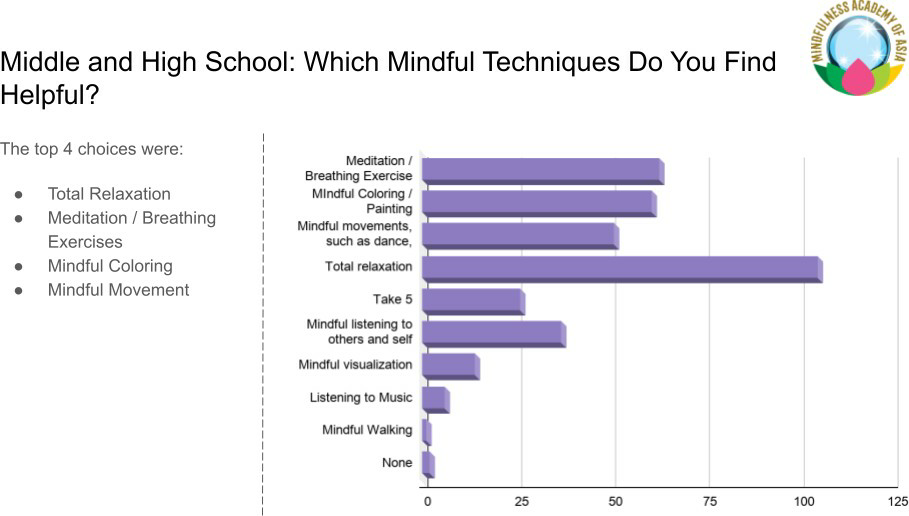
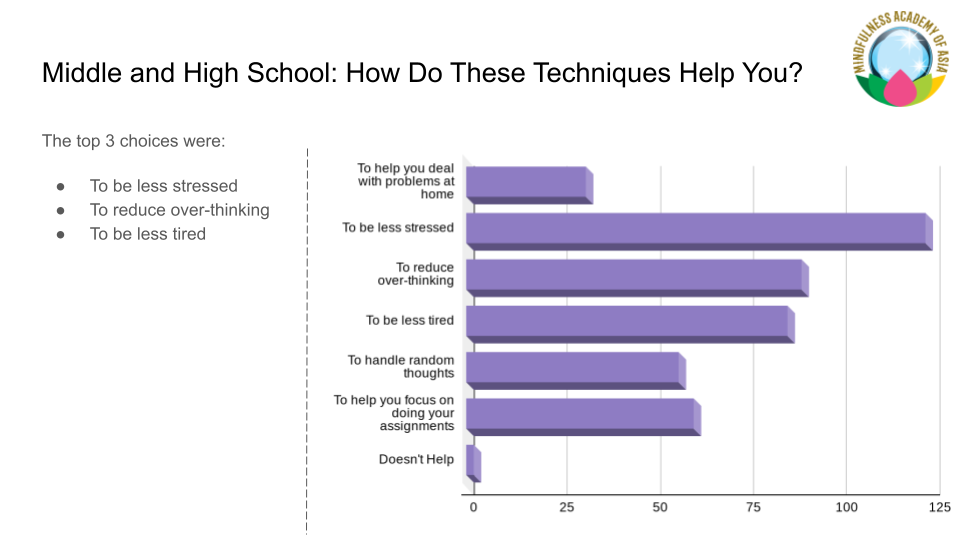
Middle and high school students have shown resilience and patience when they work under pressure. Students practice ‘Take 5’, meaning they take five breaths which allows them to think before they speak and respond before they react. But if they have ever lost their temper, they have learned to recompose quickly through their own mindful techniques. They perform better in standardized tests when they come across difficult questions. While performing on stage or at major competitions, they take deep breaths which can help decrease stage fright. For athletes, breathing exercises bring in more oxygen to their bodies which, in practice, can increase speed, agility, and endurance. During the dance competition, one of students was very nervous
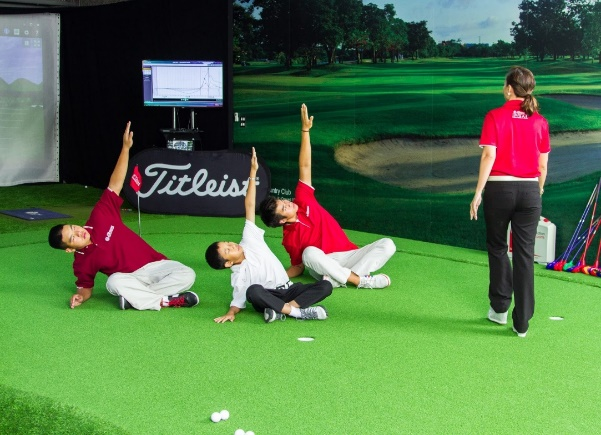
Our ASB golf team practices mindful stretching. Being aware of the physical sensation while playing golf allows one to get a mind break because golf requires so much strategic planning.

One of our high school dancers shared her experience: “I remember how my hands were shaking, how my heart was hammering against my chest, and how shallow my breaths were. Each deep breath that I took slowed down my heartbeat and put my mind in a state that I could concentrate on remembering the sequence of the choreography and have the confidence to do well.”
Our teachers practice various mindful techniques on a regular basis as we offer overnight retreats and bimonthly small groups practices. Parents also attend our mindfulness sessions every Tuesday morning and discuss parenting skills. All supporting staff also practice during their break time and attend weekend activities. All staff and students practice mindfulness five minutes together every morning assembly.
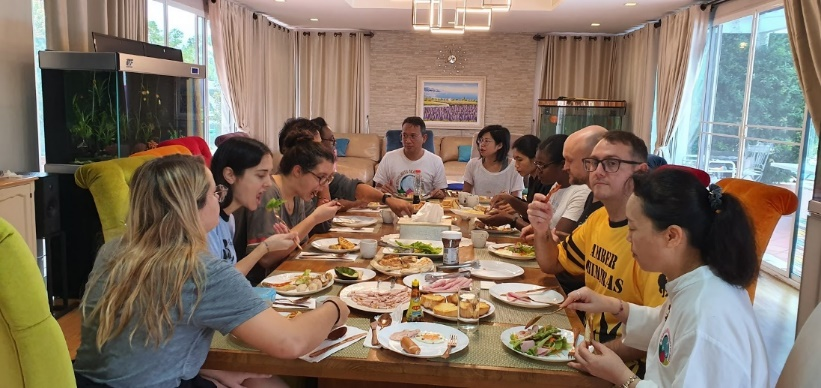
Teachers overnight retreat
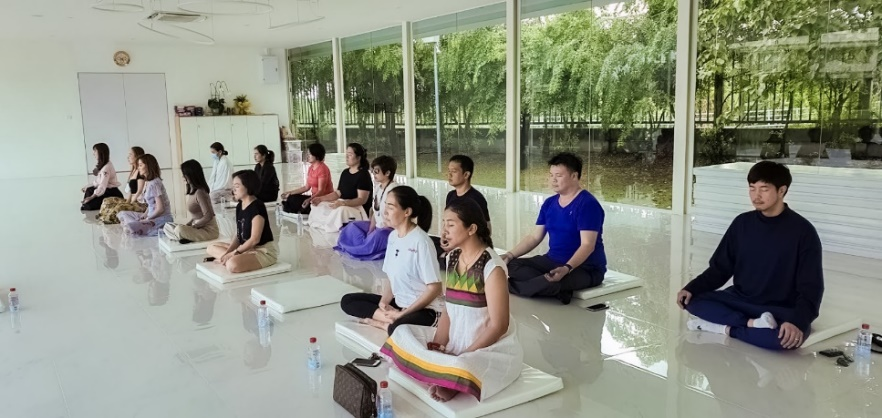
Parents weekly practice
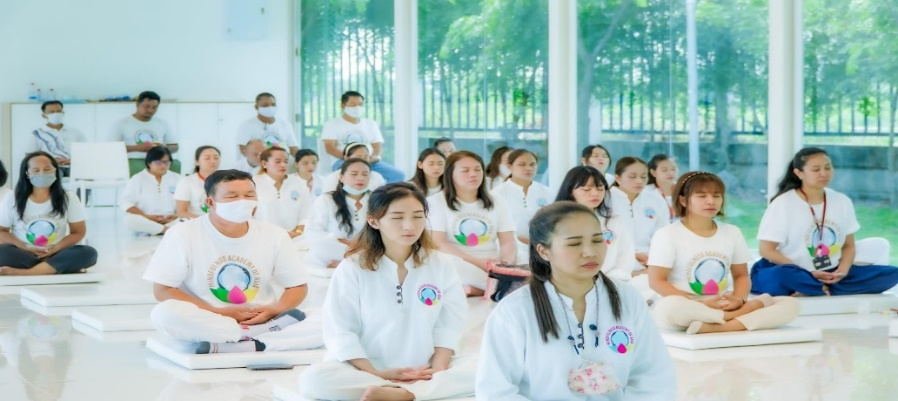
Support Staff monthly practice
Even though research and data point towards positive results, how do we know if mindfulness fits our school culture? How do you know that mindfulness is for you as an individual? Before a school leader decides to apply mindfulness in their school, one must dedicate the time to discover the benefits of mindfulness cognitively and experientially. Reading and studying about mindfulness provides a cognitive understanding for our minds to place a logic behind this mystery of the mental forces. Practicing mindfulness with an open mind is also crucial for one to experience positive habit change or feel the mental, emotional, and physical development.
There is one important fact that every school leader should know. Mindfulness, when not taught properly, may trigger trauma. This circumstance rarely happens, but the possibility is there. Any person who carries suppressed feelings and memories of anger, fear, abuse, etc may have a difficult time practicing breathing exercises. Breathing allows practitioners to look deep inside themselves and make them see what they may not wish to see. An experienced mindfulness teacher would know how to guide practitioners to practice mindfulness at their comfort level. Should pain or fear escalate, the mindfulness teacher should have the basic techniques of helping a learner cope with their excessive emotions and should refer to professional help.
Therefore, the approach to mindfulness written below may sound “touchy and feely” for some people, but I think it is important to pay attention to these details in order to prevent risk factors.
One must be willing to take the time to study the art and science of practicing mindful breathing. Breathing in and out for certain individuals may seem boring and pointless. But with a curious mind, breathing in and out could take one into a state of relaxation and calmness which can eventually transition into the mental state of equilibrium. From my 12 years of teaching and observing new mindfulness beginners, on average, an individual will experience positive change starting with mindful breathing for 10 minutes a day through a consecutive period of 21 days. Our nervous system will start to get used to the mental exercise which allows the neurons to rewire their connections, enabling us to develop new skills, attitudes and habits. Most practitioners agree that mindful breathing helps them sleep longer and deeper. Others say that it allows them to pause and reflect.
But if an individual does not experience a positive effect from mindful practice, is there something wrong? The answer is no. Different individuals have their own pace. While research says that an individual may experience change within 21 days, others may take as long as several months and years. Mindfulness means to be aware of the physical, mental, and emotional states in the present moment with a non-judgmental attitude. If an individual is experiencing trauma, stress, and uncertainty, it is common that they may take longer to experience the positive effect.
When one decides to take the mindfulness journey, one must understand that there is no right or wrong before, during, and after the practice. One must not expect a positive result, but rather observe the physical, mental, and emotional states as they are. With gentle awareness, one is practicing being non-judgmental. The state of non-judgment allows the body to release stress, fear, anxiety, and depression. Eventually, the body, mind, and spirit will recover from negative thoughts and emotions, thus transitioning into a state of peace. Focus and concentration can be developed and sustained when a person has a peace of mind.
Gentle awareness is the art of practicing mindful breathing. As our minds wander long and lost in different directions, it can return through the gentle awareness. A little bit of reminding ourselves brings our attention back into mindful breathing. It is common for our body to experience physical and/or emotional discomfort from time to time during the practice. Mindful breathing is about understanding the balance between pushing and pulling our attention. The pushing side is where we try to complete a set time which could be only 10 minutes for starters. The pulling is where we remain non-judgmental about our attention span during the breathing exercise. Mindful breathing is the art and science of sustaining our attention span of the “in” breath and “out” breath.
There is a perception that one must always learn how to sit in a cross-legged position, close their eyes, and breath in order to practice mindfulness. While this is the epitome of mental and emotional regulation, there are other ways that an individual can enjoy being in the present moment. Total relaxation refers to the technique of lying down with our body fully rested while just concentrating on breathing in and out. Body scan is a technique where an individual unwinds any physical tension from head, neck, chest, and the rest of the body. Pausing for a minute or two during the day helps our brain reset its pace.
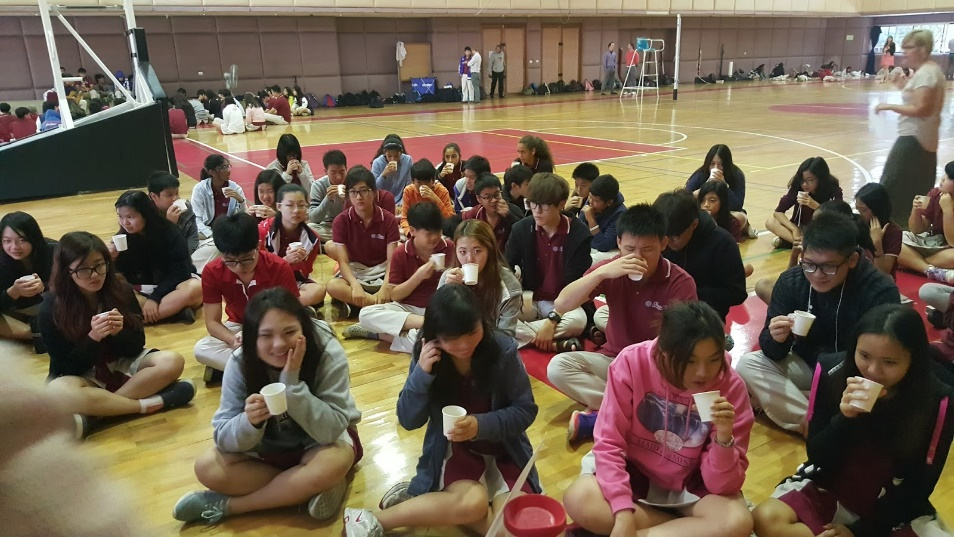
Middle school and high school students enjoy sipping their hot tea.
If you want to know if mindfulness fits your school culture, the first question you have to answer is are you passionate about cultivating a mental and emotional wisdom? If yes, then be prepared that it will be a long and difficult journey before stakeholders truly accept mindfulness practice. It is a skill that cannot be forced upon an individual; therefore school leaders will have to be very tactful in explaining why the school chooses to implement mindfulness.
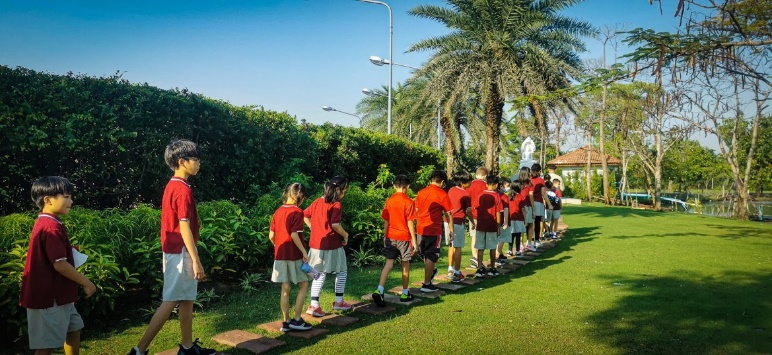
Mindful walking in the garden
In your school culture, the choice of words may have a lot of impact. It does not always have to be mindfulness. Words like well-being or fostering a healthy mind represent the same meaning. In every school, there will always be a staff or teacher who is interested in mindfulness. Find those people and have them help you kickstart your mindfulness program. It works when you start from a small group of people who genuinely care. Their testimonies will be the force to invite others to follow.
How do we know which curriculum fits your school culture and or age group? The answer is we don't know until you experiment what works for you as an individual and later convey it to your students and staff. There are many websites, YouTube videos, and authors who are skilful in teaching mindful breathing for beginners. Be sure to pick the site/teacher that resonates with you. It would be best to learn from an experienced practitioner whether it is through online or in person. For starters, I would not recommend mindfulness practice as a self-taught skill as it involves many underlying psychological factors. Experiencing meaningful, informed practice for yourself can serve as the first step towards implementing mindfulness in your school culture.
To find out more about the mindfulness practices and activities mentioned in this article, please visit The Mindfulness Academy of Asia YouTube Channel here: https://www.youtube.com/channel/UCUvdiNF1fUHHpxhyNZAlP5w


)
)
)
)
)
)
)
)
)